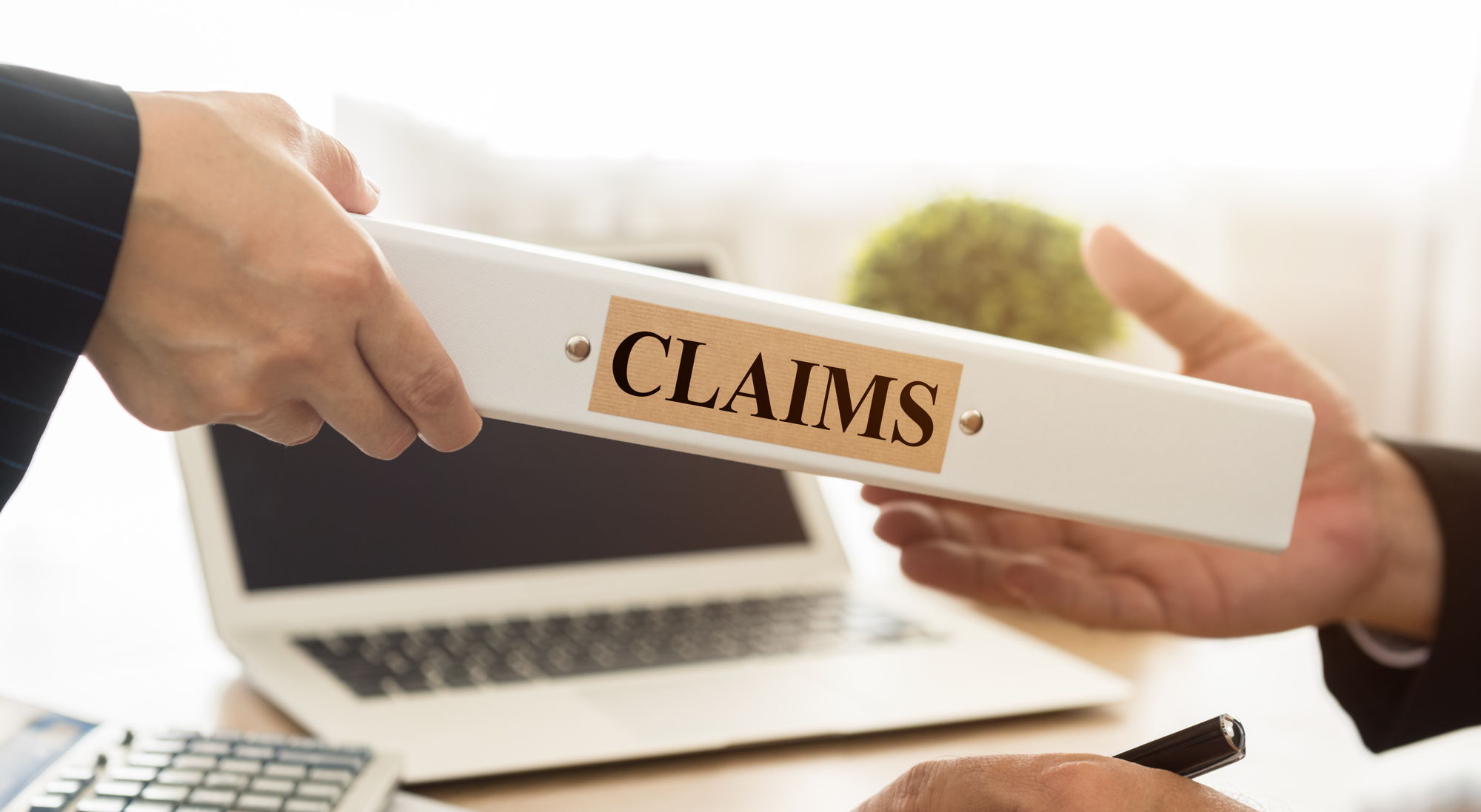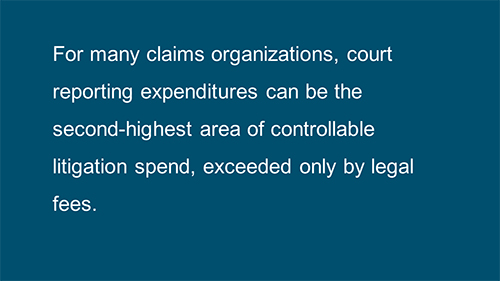
Who knew? A weapon to tackle ALAE, ULAE and loss cost
We don’t usually traffic in alphabet soup, but we know insurance defense, and we know how important each of these acronyms is to your business. They’re major costs you want to reduce.
If you’re a claims exec, you know exactly what I’m talking about. If you’re new in the industry, let me explain:
ALAE is allocated loss adjustment expense – all the costs attributable to defending a particular claim. They include legal expenses such as attorney fees, depositions, transcripts, exhibits, printing, shipping and mailing.
ULAE is unallocated loss adjustment expense – the overhead costs of your operations, including investigations, adjusters, offices, training, technology, etc.
 Loss cost (aka indemnity) is the nominal cost of a settlement or verdict.
Loss cost (aka indemnity) is the nominal cost of a settlement or verdict.
Quick, what often overlooked tool in your operations arsenal tackles all of these? Court reporting.
True. Given the cost of eDiscovery and settlement, I realize it’s not something you think about every day. Nonetheless, here are a few ways smart court reporting choices can reduce each one of these expense areas. For many claims organizations, court reporting expenditures can be the second-highest area of controllable litigation spend, exceeded only by legal fees. They’re decisions you may be leaving in the hands of the law firms who defend your clients, but which could be better managed by you and your team.
We offer best practice suggestions for controlling ALAE, ULAE and loss cost below.
ALAE
As many claims and litigation executives know, the primary trend in litigation ALAE management is now for claims organization to vet and procure a relationship with a court reporting services provider directly. This represents a significant departure from historical practices, where claims organizations left it up each of their defense counsel to find (and negotiate) court reporting prices.
By negotiating directly with a qualified services provider – particularly one with national scale and coverage – executives can leverage the true buying power of their organization. This can create a significant reduction in ALAE costs related to deposition services.
A second area in which your court reporting services provider can help you to manage your litigation ALAE is through the reporting and metrics they can provide. How many attorneys are doing how many depositions over what period of time? What is it costing you? How many are expediting every transcript because they’re behind on the case? Is your legal team chasing your cases or driving them? How many of them are traveling to depositions? Looking at the data this way can turn up some surprising information about the ways your attorneys practice and at what levels of efficiency.
Third, if your legal team isn’t doing it already, now is also the time to consider, in the right circumstances, remote depositions. These affect the whole gamut of costs, reducing travel and lodging costs on the ALAE side and potentially affecting outcomes on the loss cost side. You may decide to take seemingly less relevant depositions more readily, given the drastically reduced costs, only to find critical information that sways the outcome of the case.
ULAE
What about ULAE costs?
Any time you or your legal team can get easier, more efficient access to your most valuable information, you’re chipping away at your ULAE costs. Look for a deposition provider that can put all of the deposition transcripts for your cases in a single, searchable repository. The repository should produce both traditional transcripts and video clips via the same search.
Second, insist on concise readable transcripts summaries, one-page indexes, and alerts that remind you when important deposition transcripts are certified and ready to read. Whether or not you or your team personally review transcripts on a day-to-day basis, or just on major files, these features will help your attorneys be more efficient, consistently eroding those hard-to-budge ULAE costs.
Third, think about the opportunity for your litigation managers to personally judge the credibility of experts or claimants at deposition – without ever leaving their desk. Look for a deposition services provider that can provide remote attendance technologies that stream the deposition directly to the file handlers’ desks, and even allow them to pass private questions to the attorneys taking the deposition. That’s really doing more with less!
Loss cost
This is the bulk of your spending, the most painful outlay, and one where the right deposition management tools can make a lot of difference. Working with easily searchable electronic transcripts increases the likelihood that your lawyers or you will be able to find smoking guns in depositions that could dramatically turn the case. It takes mere seconds, for example, to search on particular expert witnesses and see how many times they show up in your cases – perhaps giving conflicting, misleading or impeachable testimony.
As you can see, court reporting is the new cost management, and it addresses the big three – ALAE, ULAE and loss cost. To much of the world, they’re alphabet soup, but to us, they’re the meat and potatoes of smarter spending.
